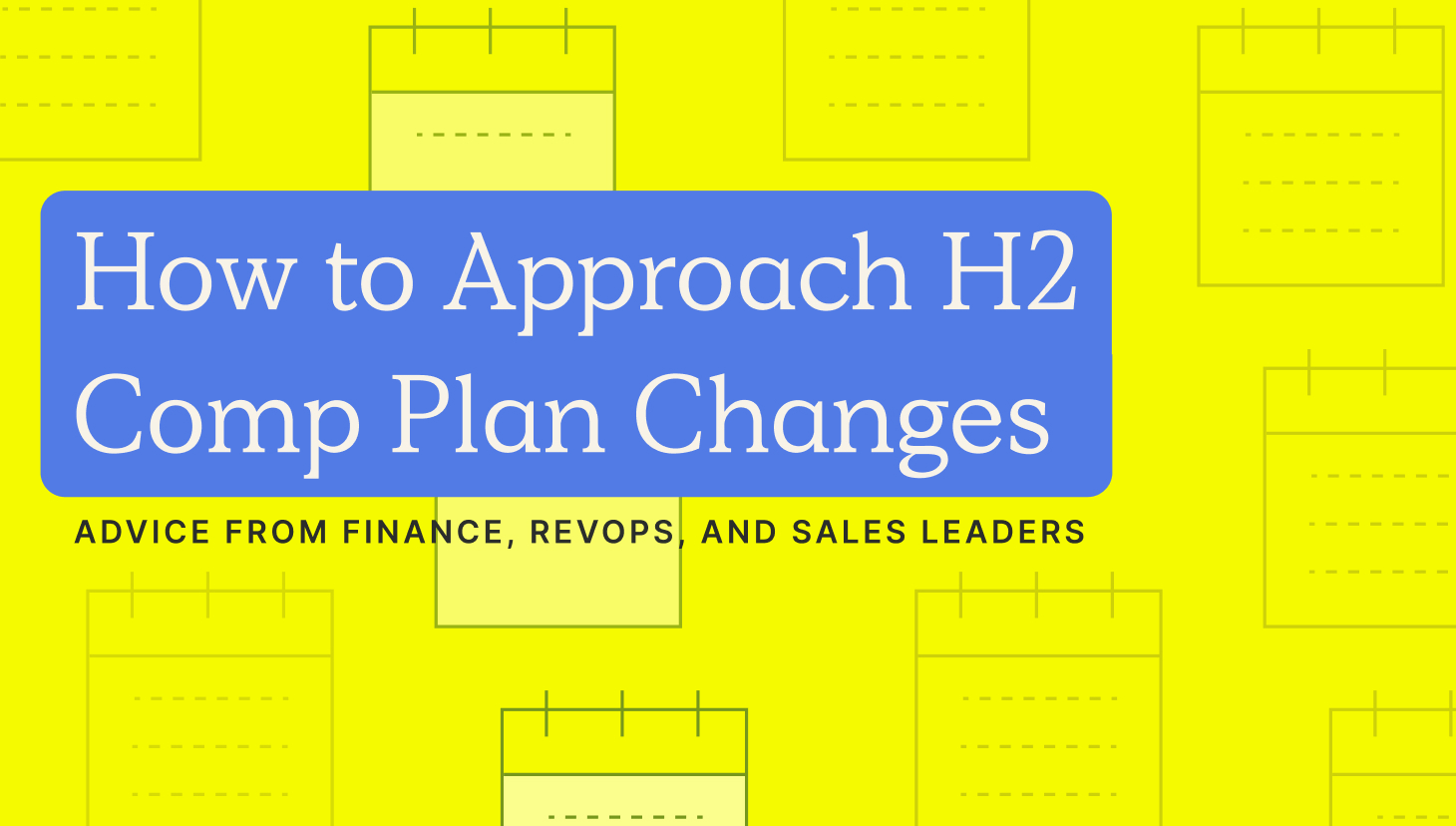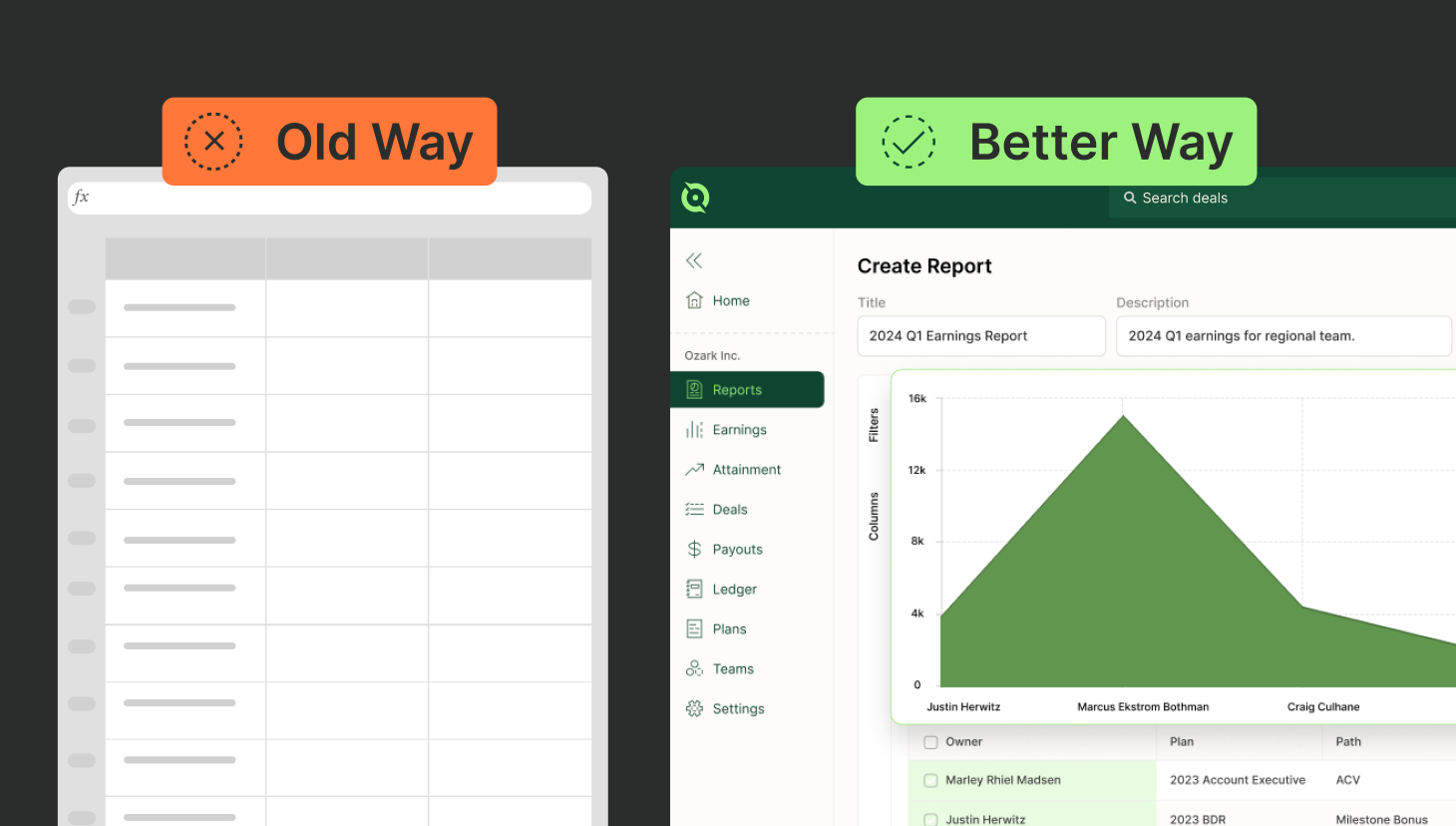This blog, written by Cody Short, details commission rates by industry, setting commission structures, and more.
All companies need a high-performing sales team. Sales helps a company increase its profitability and plays an integral role in the growth of the organization.
But first, you need a talented team of people who can sell the company’s products. Easier said than done, right?
A lot of businesses, especially early-stage startups, struggle to find and keep a loyal pool of top sellers. And in 2023, keeping those top sellers is more than ever. Mass layoffs across the tech industry and the previous year’s 50 million people who voluntarily quit their jobs have made matters increasingly more challenging. Plus, inflation in 2023 remains high at 6.04% — although that’s about 2% lower than in 2022.
However, having the right variable compensation plans in place can help with your sales team retention strategies.
It’s important to pay people well so that they feel like a valuable part of the team and remain loyal to the business. Many sales reps base their career decisions on the amount of money they can make at a company.
So, how can you set sales commission rates that attract and retain talent? We’ve outlined a few commission structure best practices below.
Importance of Transparent Commission Rates
First, let’s start with why it’s important be upfront about commission rates.
Transparent commission rates foster trust between sales teams and leadership, ensuring everyone understands how their earnings are calculated. This clarity helps motivate salespeople, as they can directly see the link between their performance and rewards. Transparency also reduces confusion or disputes, saving time and improving morale. Lastly, it supports equitable treatment across the team, aligning compensation with goals and fostering a fair, high-performing culture.
Top Commission Rates and Bonus Types to Consider
A sales commission structure determines how much variable pay a company wants to compensate its sales teams.
A typical sales commission structure sets the rules or conditions for how a sales rep earns commissions or bonuses according to their sales compensation plan. The structure differs from the sales compensation plan model in that the plan itself outlines the sellers’ entire compensation package. This could include the base salary, commission rates, and on-target earnings (OTE).
There are about 10 commission structures to consider, in addition to determining when reps get paid, on what, and how much in the actual comp plan.
But what matters most is that the structure and compensation strategy complement one another and motivate and reward positive selling behaviors.
How Commission Rates Vary by Sales Role
The first commission rate we’ll cover includes the single rate, flat rate, and fixed rate. All three terms mean the same thing, which we define as a set earned commission based on a single percentage of the deals that close. By the way, the standard commission rate for SaaS sales is 10%. To set a commission rate, check out this blog.
Instead of a single rate, a company can offer a bonus. Bonuses incentivize sales reps by paying out a pre-determined amount after they meet or exceed a goal. A company can determine the bonus payout in several ways, such as the following:
Milestone Bonus: This bonus is awarded for achieving set goals for each given milestone (monthly or quarterly) within a year that is set by the company. Example: If you hit your quarterly quota you will get a $5,000 bonus.
Ranking Bonus: This bonus is awarded based on a final ranking within a group. Example: If you’re the top seller for the quarter, you will get a $1,000 bonus.
Bonus on Multiple Quotas: This bonus is awarded to the person who achieves multiple quotas. Example: If you hit your new business and retention quotas you will earn a $2,000 bonus.
Accelerators, which reward sales reps for exceeding their quotas or goals, mark another way to incentivize reps. There are two types of accelerators:
Accelerated Rate Tiers by Attainment: The rates can change based on quota attainment or the amount sold. Example: 20% of any deal sold until achieving quota. When the quota is reached, you can earn 25%.
Accelerators with Multipliers: Rates change based on achievements and multiply by other criteria. Example: You can earn 15% on a 1-year deal, 20% on a 2-year deal, or 25% on a 3-year deal.
Usually, a company will offer a comprehensive compensation package that will include most or all of the things mentioned above. According to Mapmycustomers, nearly 50% of businesses offer a base salary plus commission, while only 25% offer a base plus a bonus.
Commission Rates by Industry: A Detailed Breakdown
Curiosu what the top-paying sales industries are? We found some sales commission benchmarks by industry, according to mapmycustomers and SmartWinnr.
The section of the table featuring only commissions is brought to you by data from Indeed.
|
Industry
|
Annual Sales Compensation and Salary Totals
|
|
Insurance Sales Agent
|
$69,100
|
|
Wholesales and Manufacturing, Technical and Scientific Products
|
$99,680
|
|
Real Estate Agents
|
$62,990
|
|
Advertising Sales Agents
|
$51,740
|
|
Door-to-Door Sales
|
$36,740
|
|
Retail Sales
|
$30,940
|
|
SaaS Sales
|
$56,130
|
|
All others
|
$33,200
|
|
Industry
|
Annual Commissions
|
|
Retail sales representative
|
$10,000
|
|
Financial services representative
|
$10,100
|
|
Door-to-door sales representative
|
$12,500
|
|
Advertising sales representative
|
$15,000
|
|
Manufacturing sales representative
|
$30,000
|
Different types of compensation structure
There are more than three compensation structures, but these are the most common:
Commission-only sales compensation plan
A sales rep earns their entire pay based off of what they sell. This type of compensation is common in B2C transactions like real estate, auto sales, and insurance plans. Some sales reps stay away from this type of compensation plan due to companies usually don’t invest in developing the rep’s talent nor can the company forecast long-term business expenses.
Base salary plus commission sales compensation plan
This plan is probably the most common. It’s a healthy balance of giving the rep a salary to live off of, but also giving them an incentive to reach their sales quota. Companies who offer this plan tend to have a better forecast of their business expenses.
Base salary plus bonus sales compensation plan
This plan is most effective for reps who surpass their quotas or preset targets. This plan is also not exclusive to sales reps but also other roles in a company that assist sales reps in closing deals. This allows a company to remain predictable in their forecasts but still give their reps an incentive.
Commission rates by role
In addition to industry, commission rates by role will vary as well. For instance, a sales rep typically earns the highest percentage from a sale, while a sales development rep, account manager, and sales director receive much less. Let’s take a look at the commission rates by role below.
Account executive commission rates
The standard commission rate on a deal for an AE is typically 10%. Most sales compensation plans will also adopt accelerators to motivate and reward overperformance. Check out this AE comp plan example and template that includes a 10% base rate and an accelerator.
Sales development rep commission rates
SDR comp plan examples might include a means to earn a commission if an AE goes on to close/won a lead the SDR generated. Called the Closed Won Commission model, SDR commission rates will usually fall between 3 and 5 %.
Account manager commission rates
We’re noticing a shift in commission rates on account manager plans this year. Previously, 5% was the most common commission rate on upsells. However, now that organizations are moving from a “grow at all costs” mentality to a “predictable revenue model,” we’re seeing upsell commission rates closer to 10%.
Sales Director commission rates
Since sales directors usually earn a commission from every single deal a member of their team brings in, commission rates for sales directors float between 3 and 5%.
How the Right Commission Structure Can Attract Top Sellers
A well-designed commission structure is crucial for attracting and retaining top-tier sales talent. It should be:
- Competitive: The compensation offered should be competitive with industry standards to attract and retain top performers.
- Transparent: The commission structure should be clear and easy to understand, avoiding any ambiguity or confusion.
- Motivating: The structure should incentivize high performance and reward top achievers.
- Fair: It should be perceived as fair and equitable among the sales team, avoiding resentment or demotivation.
- Aligned with Business Goals: The commission structure should be aligned with the company’s overall objectives and priorities.
By offering a competitive, transparent, motivating, and fair commission structure, companies can attract and retain the best sales talent, ultimately driving business growth and success.
How To Determine The Right Commission Rate
Improve Your Sales Commission Strategy with QuotaPath
Thanks for learning with us today about commission rates and comp structures!
There’s not a perfect way to pay out a commission or bonus, but there is a way to make it fair for everyone. QuotaPath can handle nearly all sales compensation plans. So, regardless of the sales commission rates by industry, our commission tracking and compensation management software makes it easier for everyone to understand their sales incentive programs.
To learn how our platform helps teams maximize revenue through automated commissions, book a time with our team today.
PS: If you send us your comp plan ahead of time, we’ll map it out for you in QuotaPath and show you over a live demo.
FAQ
What is a typical sales commission?
A typical sales commission is a percentage of the revenue generated by a sales rep, commonly ranging from 5% to 20%, depending on the industry, role, and sales model.
How much does a sales rep earn?
A sales rep’s earnings typically consist of a base salary plus commissions, with total compensation varying widely by industry, role, and experience, often averaging between $50,000 and $120,000 annually.
How to find commission rates?
Commission rates can be determined through industry benchmarking, analyzing competitor plans, and aligning rates with your company’s financial goals and sales objectives.
What are commission rates?
Commission rates are the percentage or fixed amount of revenue or profit paid to sales representatives as an incentive for achieving specific sales results.
How do you determine a fair commission rate?
Fair commission rates are determined by balancing industry standards, role-specific responsibilities, profitability, and the need to incentivize desired sales behaviors.
How often should sales commission rates be reviewed and adjusted?
Sales commission rates should be reviewed annually, or more frequently if business goals, market conditions, or team feedback suggest misalignment or opportunities for improvement.



